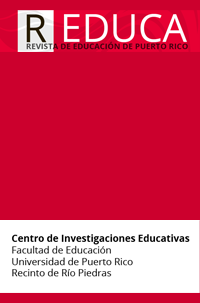Abstract
This article summarizes the findings of an ethnography conducted at a Spanish-Tzotzil elementary bilingual school in Chiapas, Mexico. It shows that the school, the educational system, teachers and students can contribute to the preservation and promotion of indigenous languages, such as the Mayan Tzotzil. On the other hand, it also invites the reader to reflect on how education has been conceived traditionally, since it has been characterized by the control and domination of students to whom they have imposed a "right answer," which is the instructor‘s or the society‘s partial and relative "truth." As a result, the probabilities of stimulating students‘ enthusiasm and creativity decrease. For this reason, this article highlights the importance of teachers to become mediators as they should be guides that support students in their learning process, that motivate students to think in a creative way instead of imposing them a "right answer." Also, it emphasizes the relevance of educating rather than instructing. The reason for doing so is to increase the possibilities of implementing quality education in which both teachers and students work collaboratively; and the classroom and the school in general become spaces where instructors and learners enjoy being, because they feel comfortable, respected, safe and motivated. Moreover, it is suggested that teachers promote dialogue and the use of fun activities since they can help create a positive and friendly environment in the classroom that can contribute not only to deliver class content in a pleasant way, but also to have the teacher and the students, in this case specifically Tzotzil children, enjoy the teaching and learning process together.
References
Albert Monrós, E. M. & Gallardo Fernández, I. M. (2018). Dialogar con emoción en educación infantil. En A. S. Jiménez Hernández, G. Ordaz Olais-Otman, M. I. Iglesias Villarán & M. C. López-Mauel Antonio Conde del Río (Coords.), Cultura de paz y buen trato a la infancia (Cap. 13, pp. 150-167). CIPI Ediciones.
Arbeláez Cardona, T. (2018). El diálogo: Condición de formación. Editorial Aula de Humanidades.
Berg, B. (2011). Qualitative research methods for the social sciences (7ma. ed.). Allyn & Bacon.
Bessant, J. (2013). History and Australian indigenous child welfare policies. Policy Studies, 34(3), 310-325.
Calvo Muñoz, C. (2001). Los niños y la propensión al aprendizaje. Congreso Europeo: Aprender a ser, aprender a vivir juntos, Santiago de Compostela, diciembre 2001. http://www.waece.org/biblioweb07/pdfs/d201.pdf
Campanas, E. (2012). Diferencias entre educación e instrucción. Scribd. https://www.scribd.com/doc/94621078/DIFERENCIAS-ENTRE-EDUCACION-E-INSTRUCCION
Del Carpio, K. (2018). Reflecting on children‘s language learning and challenges in education. International Multilingual Journal of Contemporary Research, 6(1), 1-11.
Del Carpio, K. (2019). Lenguas minorizadas y el sistema educativo: El caso del español y el gallego. Revista Internacional de Ciencias Sociales Interdisciplinares,7(2), 71- 85.
Eriesco, L. (2016, diciembre 9). La diferencia entre educación e instrucción. Mejorar la Educación. https://luisriesco.wordpress.com/2016/12/09/la-diferencia-entre-educacion-e-instruccion-2/
Granados, J. A., Cruz, J. R, Estefanía, C. M., Ichikawa, E., Maderal, L. R., Izquierdo, R., Müller, A., Colás, R. H., Clark, J. M., Gutiérrez-Álvarez, N. J., De Fana-Serrano, A., Añel, A., Peralta, G., Morales-Dopico, E. & Pérez-Pupo, J. (2010). Proyecto Educativo de la Escuela de Hoy. Ministries to the Rescue – Ministerios al Rescate. https://sites.google.com/site/escueladehoy/para-el-maestro-cubano/1---la-escuela-de-hoy
Hernández, N. & Marino, C. (2017). Multidiversidad de y para niñas y niños. (Manuscrito doctoral sin publicar). Universidad de la Salle, Costa Rica.
Instituto Nacional de Estadística y Geografía (INEGI). (2010). Principales resultados del Censo de Población y Vivienda. https://www.inegi.org.mx/programas/ccpv/2010/
Jane, J. (2013, junio 21). El rol del docente en el proceso de enseñanza-aprendizaje. Guía de Observación. https://janijanett.blogspot.com/2013/06/el-rol-del-docente-en-el-proceso-de.html
Monje Fernández, A. & Etxebarria, P. (2016). 15 actividades para cohesionar el aula. Centro Nacional de Desarrollo Curricular en Sistemas no Propietarios (CEDEC). http://cedec.intef.es/recurso-qnos-conocemosq/
Olcina-Sempere, G. (2018). La música como instrumento para el fomento de la educación intercultural. En A. S. Jiménez Hernández, G. Ordaz Olais-Otman, M. I. Iglesias Villarán & M. C. López-Mauel Antonio Conde del Río (Coords.), Cultura de paz y buen trato a la infancia (Cap. 5, pp. 61-71). CIPI Ediciones.
Salaverry, O. (2010). El niño, la familia y la educación inicial. Actualidad Psicológica. en el sitio http://www.angelfire.com/pe/actualidadpsi/cei.html
Santana Cabrera, E. G. (2016). Ambiente de aula. INED21. https://ined21.com/la-importancia-del-ambiente-aula/
The contents published in the Puerto Rico Journal of Education is freely distributed under open access practices, in accordance with the Creative Commons license, Attribution-NonCommercial 4.0 International (CC BY-NC 4.0). Through these principles, the journal and its authors allow readers to access, reproduce and share articles in full text. Users should give credit to authors in a reasonable way without suggesting they have their support. Under no circumstances, readers may make use of the contents for commercial purposes. The authors retain copyright on their works.

